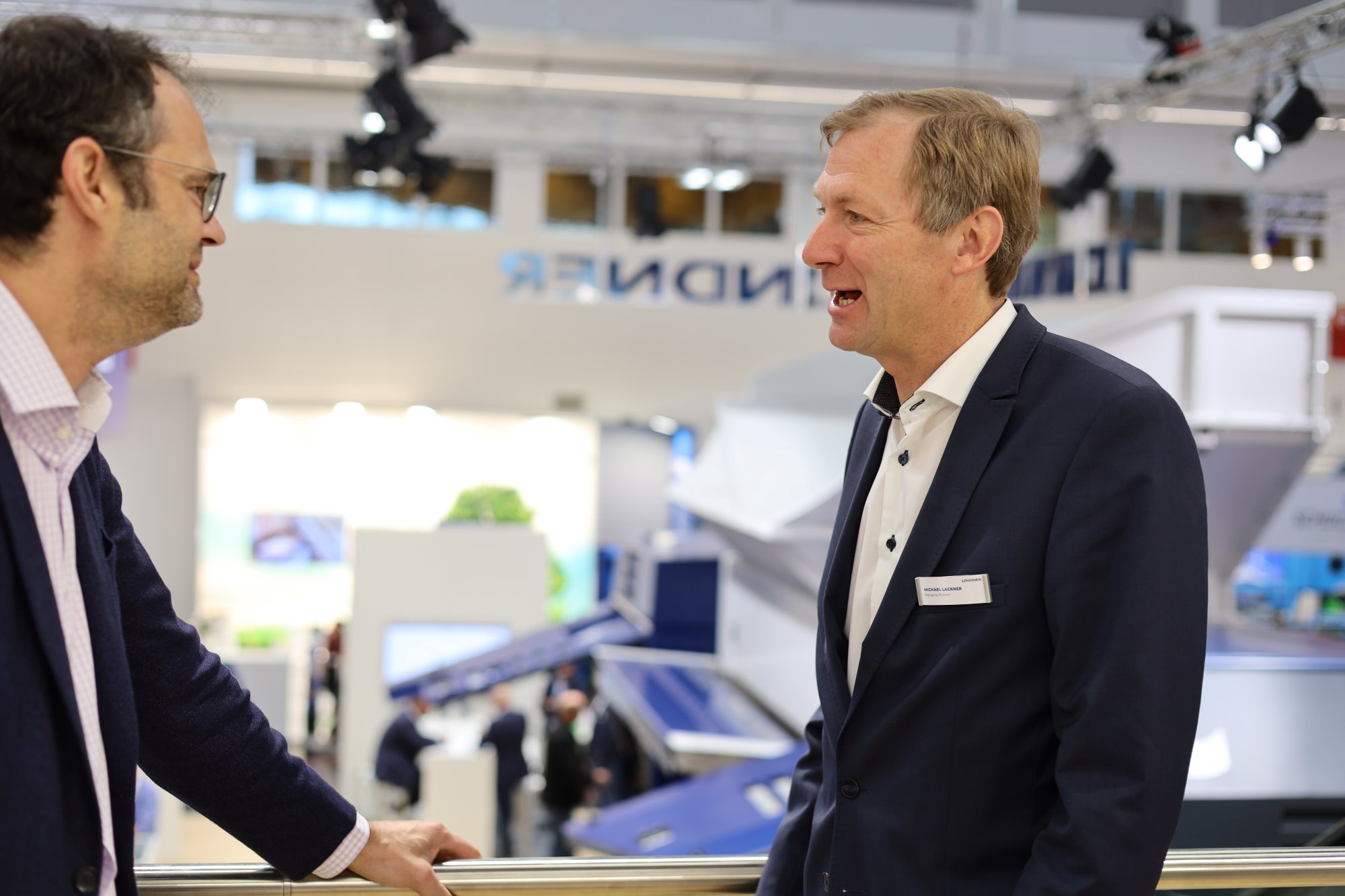Michael Lackner, Managing Director at Lindner, discusses in an interview the challenges of processing PCR plastics and how to keep plastics in the material cycle.
He explains Lindner’s approach to recycling: “The fundamental goal of processing should always be to achieve the highest possible recycling rate. In terms of plastic recycling, these requirements can be met through classic mechanical recycling processes and, in certain cases, by using additives during washing. These include specific solvents, alcohols, or surfactants. They help remove residues from post-consumer waste more effectively, including adhesives or printing ink residues. This method can even remove unwanted substances that have penetrated the polymers and cause odors.”
In polyolefin recycling, washing with cold media is standard today. In the PET sector, hot washing is more common. Both are well-developed and effective technologies in their respective applications. To improve cleaning performance, polyolefin waste is increasingly being hot washed as well.
Design for Recycling
Lackner also points out that a recycling-friendly design of packaging would facilitate the processing of PCR. However, this requires joint efforts across the entire value chain and universally applicable regulations. “Coordination with the colorant manufacturer or the film manufacturer must begin at the material design stage,” says Michael Lackner.
At the same time, fluctuations in the content and composition of the PCR stream must be considered. In summer, there is more ice cream packaging in the waste, while in winter, gift wraps are more common. For the highest possible quality recyclates, the process window of processing plants and processing technology must be as broad as possible. This means the plants must handle highly heterogeneous material.
Constantly Inconsistent
“We have to live with the fact that waste varies. It varies regionally, it varies seasonally. We bring extensive experience in aligning specific requirements with changing conditions,” explains Lackner. “We can bridge the technological gap between the waste world and the plastics world because we understand and meet the needs of both worlds.
These realities of inconsistent material flows cannot be ignored. Many things that work flawlessly in the lab or small pilot plants are not feasible in practical upscaling because the input material is too heterogeneous. “We aim to bring the highest possible share of plastic into mechanical recycling and process it into high-quality materials,” Lackner explains. “The CO2 balance is significantly better than with chemical recycling. On the other hand, there are material streams that can only be transformed into equal or higher-quality products through chemical recycling. It is important to understand that mechanical and chemical recycling complement each other and are not in competition.” The solution lies in regional cascades that in turn supply larger, centrally organized facilities, always prioritizing the most ecologically favorable recovery method.
Image above: In the interview, Michael Lackner explains the specifics of high-quality plastic recycling. Photo: Circular Technology

